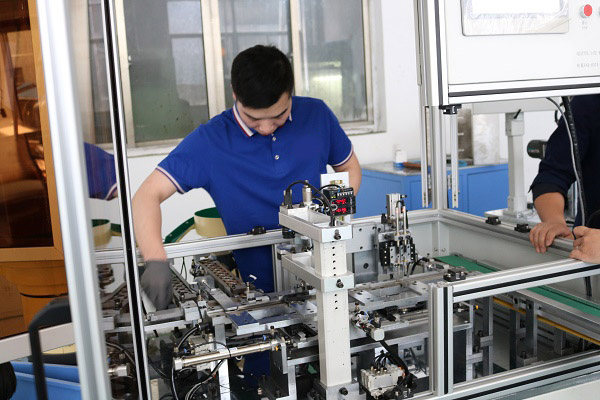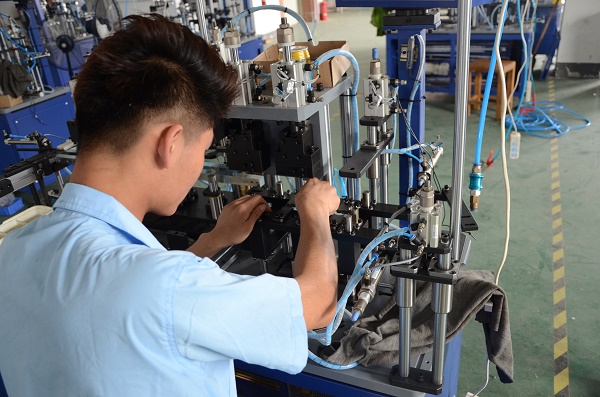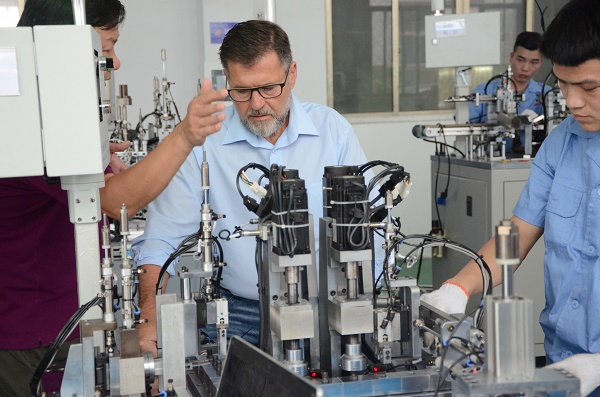Automation and intelligence are not only changing our machinery manufacturing and industrial process, but also profoundly changing our daily life. Small series take you into the world to see their home automation bar.
Japan
Japan is also a relatively developed country of intelligent home. In addition to realizing automatic networking of indoor household appliances, automatic door identification system is realized through biological certification. Standing in front of the camera installed at the entrance, it takes about one second to open the door if it is confirmed to be an apartment resident. You can open a door even with your hands.
Smart homes in Japan also include a sphygmomanometer that measures blood pressure when a person sits on the toilet. The device, which is installed in the toilet, can intercept urine samples and measure blood sugar. In addition, the bathroom sink in front of the weight meter, can be washed at the same time to measure the weight. The results can all appear on a single monitor, and the values of the whole family can be saved separately.
Australia
The feature of the smart home in Australia is that the house is 100% automated and no manual switches are visible. A button for pushing a door, for example, is fitted with a simulated finger to activate it automatically. The swimming pool is connected with the water supply system of the bathroom, automatically adding water or draining water; On rainy days the garden's automatic irrigation system will automatically stop working and many other automatic Settings. Not only that, but the smart home has only one 42-inch plasma screen to look at, while most of the room's video devices are hidden in the room's wainscoting. Security issues are also one of the criteria to test the smart home, Australia's smart home security system has more sensors, even if a fly over a bug, the system can be detected.
Spain
Spain is a country of rich artistic atmosphere, the appearance of residential buildings is mostly typical of traditional European style. But when you walk into it, the design that can discover intelligence to live in really extraordinary. When indoor natural light is sufficient, the daylight lamp with induction function will automatically extinguish, reducing energy consumption; Weather sensors installed on rooftops can get weather and temperature data at any time. When it rains, it automatically turns off lawn sprinklers and pools. And when the sun is strong, it automatically opens the awnings in the room and yard. The black hole that is distributing unevenly on the floor is automatic dust collector, need easy remote control only, they can remove all dirt on the floor instantly, rubbish to wait a moment, all these are full of downy artistic breath.
South Korea
Korea credit 4A describes their digital home system (HDS) as AnyDevice, AnyService, AnyWhere, AnyTime, which means that the system allows the owner to operate any appliance and get AnyService at AnyTime and AnyWhere. For example, in the living room, video equipment can record TV programs to the hard disk in accordance with the requirements, television, personal computer, PDA will have a TV program guide, pre-recorded programs can be played on the TV, personal computer and PDA at any time to enjoy; In the kitchen, the always-on, internet-connected refrigerator becomes the control center for other smart appliances, offering delicious recipes, Internet access and TV viewing. The bedroom has a home health check system that monitors the patient's pulse, temperature, breathing rate and symptoms, allowing the doctor to provide timely health care. Connected to a television in the bedroom, the patient can consult the doctor "face to face."
Another home-security system, called Nespot, is based on "control and prevention", combining wired and wireless networks. Nespot enables you to transmit home conditions to your computer, mobile phone or PDA in real time, whether you are at home or out, via tiny surveillance cameras, door sensors, gas leak detectors, etc. You can also turn on the lights remotely, creating an atmosphere where people are at home. In an emergency, you can also call the emergency center.





